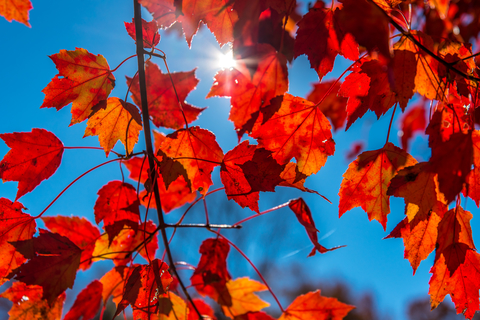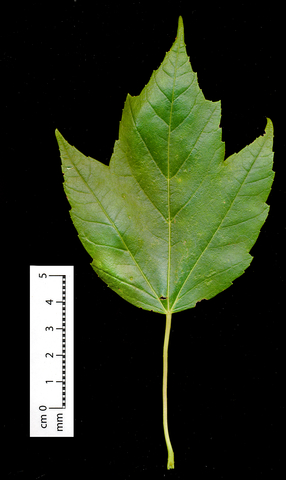Quick facts
-
Wilted maple leaves are toxic to horses if they eat 1.5 to 3 pounds of wilted leaves per 1,000 pounds of bodyweight.
-
Signs of illness include dark red/brown urine, depression and refusal to eat.
-
Fence horses out of areas with a lot of wilted maple leaves and keep maple branches out of reach from the horses.
About maples
Maple are among the genus Acer, which contains about 115 species of trees and shrubs. The four common maples native to the United States include:
-
Sugar maple
-
Red maple
-
Silver maple
-
Boxelder
Maples reproduce by seed and vegetatively by stump sprouts. They have leaves that drop in the fall and are lobed with toothed margins.
Where are maples found?
Most maple species are found throughout the eastern portion of the United States and Canada.
Some species prefer wet sites, while others grow mainly on uplands. They grow best in moist, rich and well-drained soils. Maples are common in northern temperate forests.
Toxicity
Horses must eat 1.5 to 3 pounds of dried or wilted maple leaves per 1,000 pounds of bodyweight to become sick. Fresh maple leaves aren’t toxic.
Dried maple leaves can remain toxic for four weeks, but they aren’t generally believed to retain toxicity the following spring. Thus, illness normally occurs in the autumn when normal leaf fall occurs. Leaves collected after September 15 are more toxic, but wilted leaves from summer storms can also cause illness.
Illness from maple leaves has only been reported in horses. Common signs after the first day of eating leaves include:
-
Depressed behavior
-
Tiredness
-
Not eating
-
Dark red/brown urine
Signs may progress to going down with labored breathing and increased heart rate before death.
Activated charcoal followed by mineral oil may be given soon after the horse eats leaves. Fluids and whole blood transfusions may be needed in many cases. Vitamin C, non-steroidal anti-inflammatory drugs, and corticosteroids may be used in some cases.
Control
-
Don’t cut down maple trees in horse pastures. Instead, keep branches out of reach of horses (for example, trimmed above their reach).
-
Fence around young or small maple trees for protection.
-
Fence horses out of areas with a lot of wilted maple leaves. Wilted leaves may result from fall leaf shed, trimming, frost or wind/storm damage.
Reviewed in 2021





